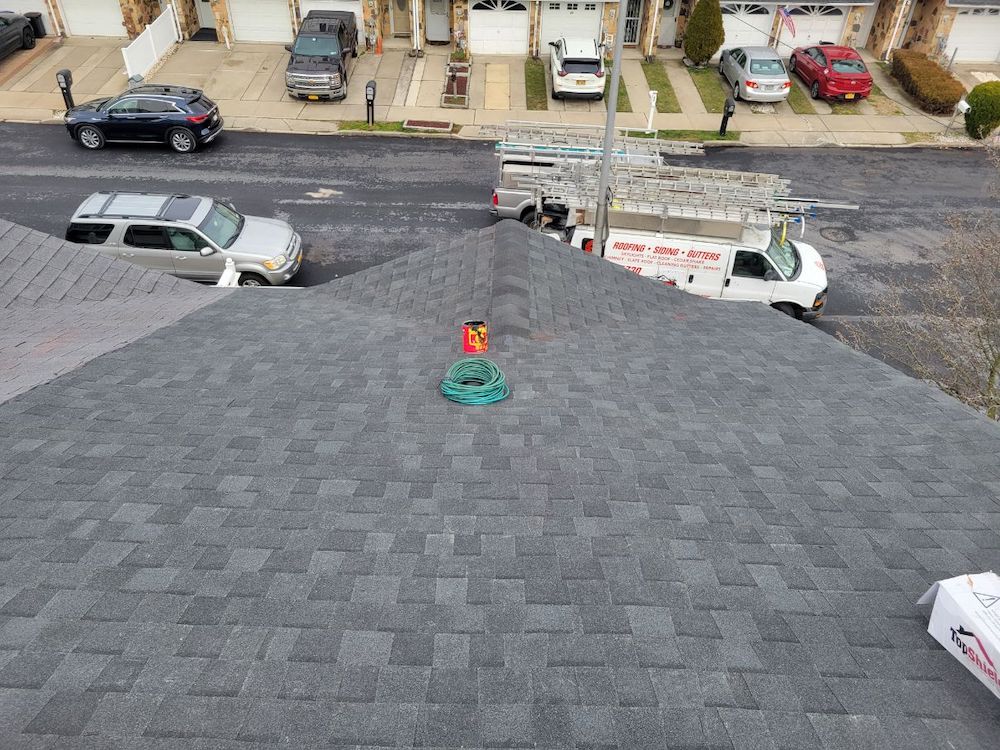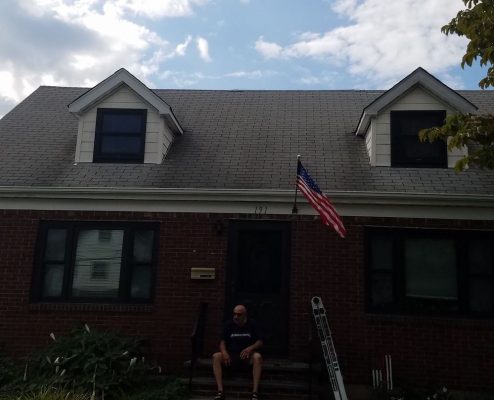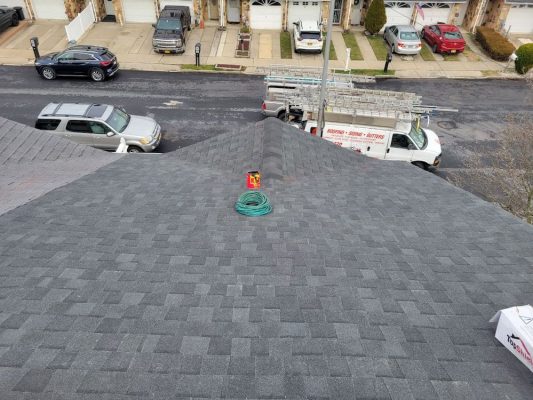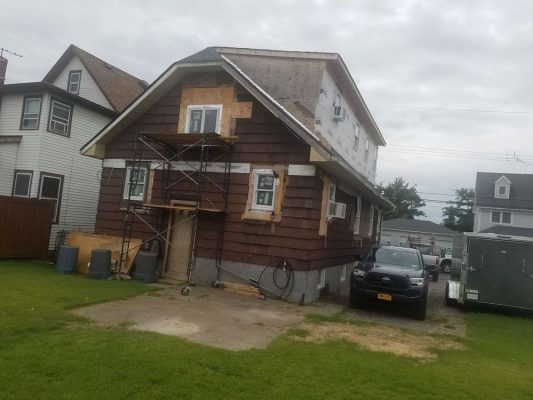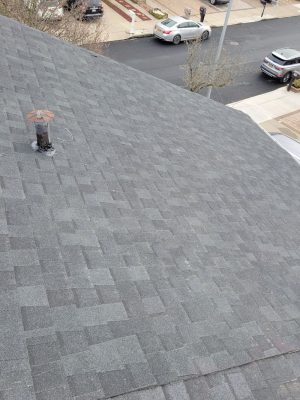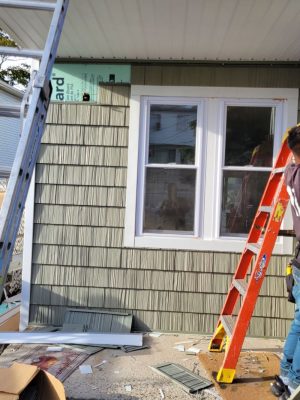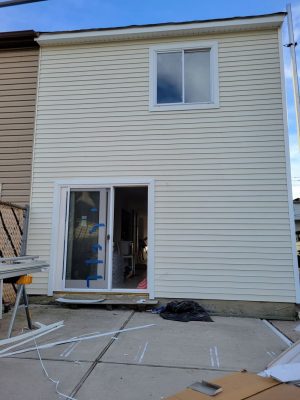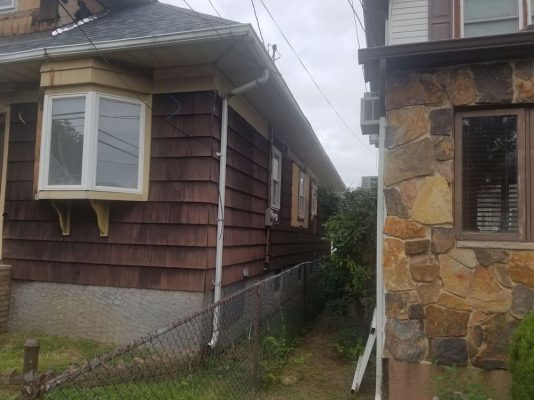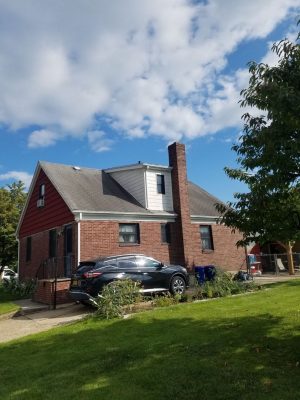Emergency Roof Repairs: What to Do After a Storm
Brought to You by Chris the Roofer - NYC
Secure Your Home From Storms with Roof Repair
Severe storms can strike at any time, leaving behind a trail of damage that puts homes and businesses at risk. One of the most vulnerable parts of any structure is the roof. High winds, heavy rain, hail, and falling debris can cause significant roofing damage, leading to leaks, missing shingles, or even structural failures.
When your roof is compromised, taking immediate action is crucial to prevent further damage and ensure the safety of your home and family. In this guide, we’ll walk you through the essential steps to take after a storm, from assessing the damage to filing an insurance claim and hiring a professional for emergency roof repairs.
Your Experienced Staten Island Roofer
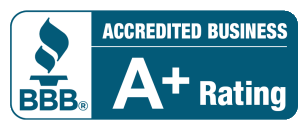


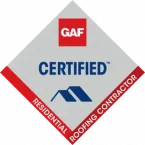


Step 1: Prioritize Safety First
Before you assess your roof, it’s essential to ensure your safety and that of your family. Storm-damaged roofs can be unstable, and loose debris can pose a hazard.
Stay Off the Roof
Even if you suspect only minor damage, never climb onto your roof after a storm. Wet or broken shingles, structural instability, and hidden damage can make it extremely dangerous. Instead, perform a visual inspection from the ground using binoculars.
Watch for Electrical Hazards
If power lines have fallen onto your roof or near your property, do not go near them. Call your local utility company immediately to report the downed wires.
Look for Interior Water Damage
Even if the roof looks intact from the outside, storm damage can lead to leaks that compromise the interior of your home. Check your ceilings, attic, and walls for water stains, bubbling paint, or dripping water.
Step 2: Perform a Preliminary Roof Inspection
Once it’s safe, conduct a visual inspection from the ground to assess potential damage.
Signs of Roof Damage After a Storm
- Missing or loose shingles – Shingles that are torn off, lifted, or curled indicate high wind damage.
- Debris on the roof – Branches, leaves, or other debris can puncture the roofing surface or add excessive weight, increasing the risk of collapse.
- Dented or cracked shingles – Hail can leave dents or cracks in shingles, reducing their effectiveness and leading to leaks.
- Damaged flashing or gutters – Look for bent or missing flashing around chimneys, vents, and skylights, as these areas are prone to leaks.
- Pooling water – Flat roofs or areas where water is collecting indicate drainage issues that could lead to leaks.
If you notice any of these signs, your roof may require immediate emergency roof repairs to prevent further damage.
Step 3: Prevent Further Damage with Temporary Fixes
While waiting for a professional roofer, you may need to take temporary measures to prevent further interior and structural damage.
How to Minimize Immediate Risks
- Cover Leaks with a Tarp – If you have active leaks, carefully place a waterproof tarp over the affected area. Secure it with boards or heavy objects to prevent wind displacement.
- Move Furniture and Valuables – If water is seeping inside, move furniture, electronics, and valuables to a dry area. Use buckets or towels to collect dripping water.
- Clear Clogged Gutters and Downspouts – If safe, remove debris from gutters and downspouts to allow proper drainage. Clogged gutters can worsen water damage by forcing rainwater under the roof.
Tip: Avoid using DIY sealants or patching materials, as they may interfere with professional repairs and could void your roof warranty.
Step 4: Document the Damage for Insurance Claims
If your roof has sustained storm damage, filing an insurance claim may help cover the cost of roof repairs. Proper documentation is essential to ensure a smooth claims process.
How to Properly Document Storm Damage
- Take Clear Photos and Videos – Capture multiple angles of the damage, both inside and outside your home.
- Record the Date and Time – Note when the storm occurred and when you first noticed the damage.
- List Damaged Property – Document any interior damage caused by leaks, including furniture, appliances, and flooring.
- Save Weather Reports – Collect news articles or weather alerts confirming the severity of the storm in your area.
Once you have gathered evidence, contact your homeowner’s insurance provider to start the claims process.
Step 5: Contact a Professional Roofing Contractor
After a storm, you’ll need a licensed and experienced roofing contractor to assess the damage and make emergency repairs.
How to Choose a Reliable Roofer
- Check for Proper Licensing and Insurance – Ensure the contractor is licensed to operate in your area and carries liability and worker’s compensation insurance.
- Look for Storm Damage Experience – Choose a roofer with expertise in handling storm-related repairs and navigating insurance claims.
- Read Reviews and Ask for References – Check online reviews and request references from past customers to verify their work quality.
- Avoid Scammers and Storm Chasers – Be cautious of out-of-town contractors who show up unsolicited after a storm. These “storm chasers” often provide low-quality work and disappear after payment.
Chris the Roofer NYC provides emergency storm damage repairs with a focus on quality craftsmanship, fast response times, and insurance claim assistance.
Step 6: Understand the Repair vs. Replacement Decision
After the inspection, your contractor will recommend either repairing or replacing your roof, depending on the extent of the damage.
Roof Repairs May Be Sufficient If:
✔ Only a few shingles are missing or damaged.
✔ Flashing or gutters need minor fixes.
✔ There are no structural issues.
Roof Replacement May Be Necessary If:
✔ The storm caused significant structural damage.
✔ A large portion of shingles is missing or broken.
✔ The roof is old and nearing the end of its lifespan.
✔ There’s widespread water damage or mold growth.
Your contractor will guide you through the best course of action, keeping safety, cost, and long-term durability in mind.
Step 7: Prevent Future Storm Damage
Once your roof is repaired, take preventative measures to minimize future storm damage.
Proactive Steps to Strengthen Your Roof
✅ Schedule Regular Roof Inspections – Have your roof checked at least once a year to catch issues early.
✅ Trim Overhanging Trees – Cut back branches that could fall onto your roof during high winds.
✅ Reinforce Your Roofing Materials – Upgrade to impact-resistant shingles or metal roofing for better storm resistance.
✅ Secure Gutters and Downspouts – Keep gutters clean and firmly attached to ensure proper drainage.
✅ Invest in Storm Straps or Roof Bracing – Strengthen your roof structure if you live in an area prone to severe storms.
Why Choose Chris the Roofer NYC for Emergency Repairs?
When disaster strikes, you need a roofing contractor you can trust. Chris the Roofer NYC provides fast, reliable, and professional emergency roof repairs to protect your home from further damage.
Our Services Include:
✔ 24/7 emergency roof repair assistance
✔ Free storm damage inspections
✔ Temporary roof tarping to prevent leaks
✔ Insurance claim guidance
✔ Full roof replacements when necessary
We understand the stress of dealing with storm damage and are committed to providing quality repairs that ensure your home is safe and secure.
The Cost of Emergency Roof Repairs: What to Expect
One of the biggest concerns homeowners have after a storm is the cost of emergency roof repairs. While the cost varies based on factors such as the extent of the damage, the type of materials needed, and labor costs, having an understanding of potential expenses can help you prepare.
Factors That Influence Emergency Roof Repair Costs
✔ Extent of Damage – Minor repairs, such as replacing a few shingles, will cost significantly less than fixing structural damage or a complete roof replacement.
✔ Roof Size & Material – The size and material of your roof impact the cost. Asphalt shingles are generally more affordable to repair than slate, tile, or metal roofing.
✔ Labor Costs – Emergency repairs often come with higher labor costs due to the urgency of the situation, especially if work is needed after hours or during extreme weather conditions.
✔ Permit Requirements – Some municipalities require permits for significant roof repairs, which can add to the overall cost.
✔ Insurance Coverage – If the storm damage is covered under your homeowner’s insurance, your out-of-pocket costs may be limited to your deductible.
To get an accurate cost estimate, schedule a professional inspection with a trusted contractor like Chris the Roofer NYC. We provide transparent pricing and insurance assistance to help you manage repair costs effectively.
How Insurance Can Help Cover Roof Repair Costs
Storm damage is often covered by homeowner’s insurance, but navigating the claims process can be complicated. Understanding how your policy works and taking the right steps can make a huge difference in how much your insurance covers.
What Insurance Typically Covers
Most standard homeowner’s insurance policies cover:
✔ Wind and hail damage – Missing shingles, leaks, or structural damage caused by high winds or hail.
✔ Fallen debris – Tree limbs or other debris that damages the roof.
✔ Water damage from storms – Leaks caused by wind-driven rain or ice dams (depending on your policy).
What Insurance May NOT Cover
✖ Damage due to lack of maintenance or pre-existing roof issues.
✖ Gradual wear and tear or age-related deterioration of the roof.
✖ Poor workmanship from previous repairs not done by licensed professionals.
Steps to File a Roof Damage Insurance Claim
1️⃣ Review Your Policy – Check what’s covered and what your deductible is.
2️⃣ Document the Damage – Take photos and videos of the damage for evidence.
3️⃣ Schedule a Professional Inspection – A licensed roofing contractor can provide a detailed damage assessment.
4️⃣ File a Claim Promptly – Contact your insurance provider as soon as possible to start the claims process.
5️⃣ Work with a Trusted Roofer – Choose a contractor who has experience working with insurance claims to ensure you receive a fair settlement.
Chris the Roofer NYC specializes in storm damage repair and insurance claims assistance, helping homeowners get the coverage they deserve. Contact us today for a free inspection and claims support!
Take Action Immediately After a Storm
Storms can leave devastating damage in their wake, but taking swift and strategic action can prevent further destruction. Prioritizing safety, documenting the damage, contacting your insurance provider, and working with a professional roofing contractor are key steps in handling emergency roof repairs effectively.
Don’t wait until the damage worsens—reach out to Chris the Roofer NYC today for a professional assessment and fast emergency repair services. Let us help you restore your roof and protect your home for years to come.
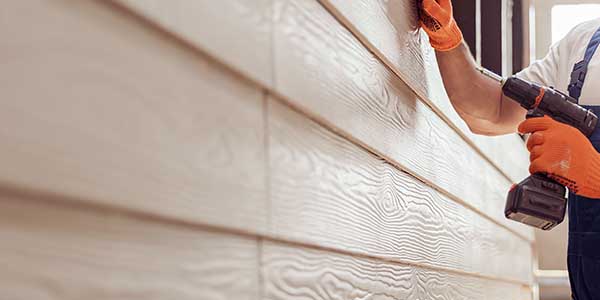
Timing Your Repairs or Replacement
Timing plays a critical role in determining whether to repair or replace your vinyl siding. Addressing damage promptly can prevent it from worsening, especially if you’re dealing with cracks, loose panels, or moisture infiltration. Fall and spring are ideal seasons for siding repairs, as moderate weather conditions make it easier for contractors to work efficiently.
For full replacements, timing is even more important. If your siding is significantly compromised, waiting until after a harsh winter or storm season could lead to more severe structural issues and higher repair costs. Additionally, tackling a full replacement during the off-season (early spring or late fall) can often result in better scheduling flexibility and potentially lower costs, as contractors are typically less busy.
By carefully considering when to address siding issues, you can maximize the longevity and effectiveness of your home’s exterior while minimizing the likelihood of future complications. Chris the Roofer NYC can help you assess the urgency of your siding needs and recommend the best time to undertake repairs or replacement.
Should You Get Siding Repair or Replacement?
Choosing between vinyl siding repairs and a full replacement is a decision that depends on various factors, including the extent of the damage, the age of your siding, your budget, and your long-term goals. While repairs are often the most cost-effective solution for minor issues, a full replacement provides long-term benefits such as improved curb appeal, energy efficiency, and comprehensive protection.
By carefully evaluating your siding’s condition and consulting with professionals like Chris the Roofer NYC, you can make an informed decision that meets your needs and budget. Contact us today for a consultation and let us help you protect and enhance your home with expert vinyl siding services.
Experience Peace of Mind with an Experienced Team
When you choose Chris the Roofer NYC, you’re not just getting a contractor; you’re gaining a partner in protecting your home. Our commitment to quality, transparency, and customer satisfaction is unmatched in the industry. Contact us today to schedule your consultation and take the first step towards a roof you can rely on.


